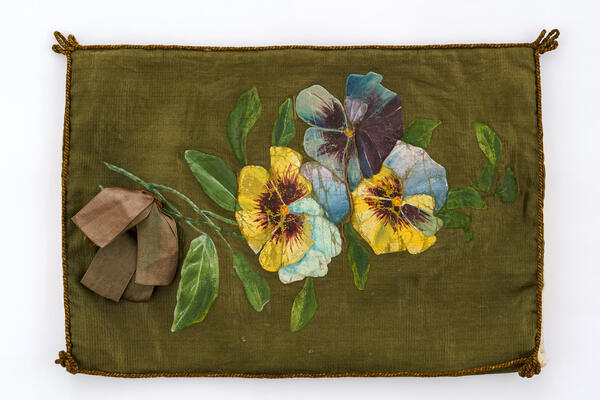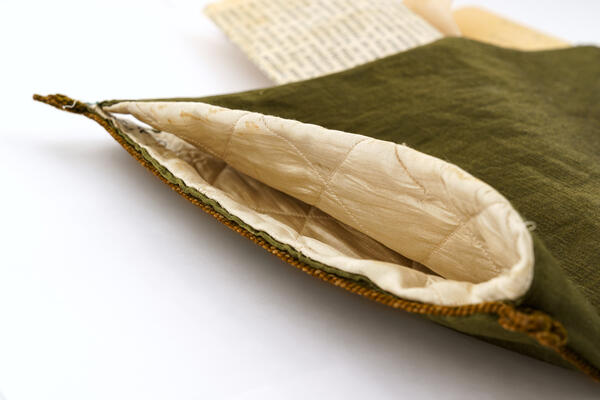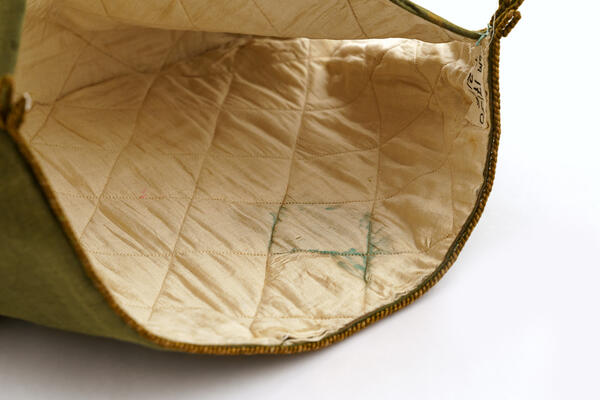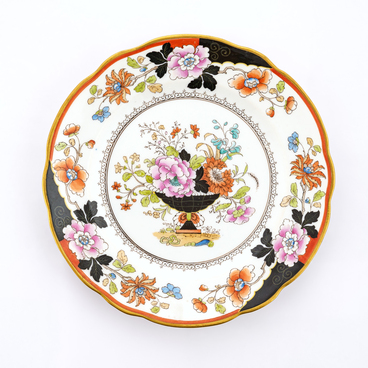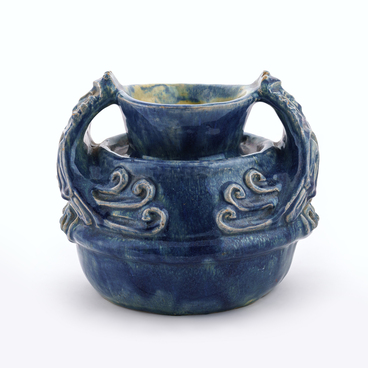The second half of the 19th century saw a rapid development of periodicals in the Russian Empire. This was due to the increasing popularity of reading as a leisure activity, which led to the emergence of objects designed to store books and magazines at home. Magazines, business cards and other papers could be temporarily placed in a paper case, maintaining the overall neat appearance of the room. Additionally, paper holders could be used to decorate interiors.
There were two primary types of paper holders: floor stands and wall-mounted holders. A significant advantage of the floor stand variety was its portability: it could be relocated if necessary. Conversely, the wall-mounted holder was more space-efficient, and it was easy to display a wide range of printed materials in a small space.
The newspaper holder on display at the Rybinsk Museum-Reserve is made of green silk, with a quilted white silk lining. The holder is adorned with a painted floral branch, finished with a small green silk bow. At the turn of the 20th century, home textiles often featured painted images, along with traditional embroidery. Overall, judging by the decorative design of the holder, it can be classified as belonging to the Art Nouveau style that was popular at the time.
The deep, dark green color palette is not arbitrary. According to the language of flowers, which was popular during this period, it symbolized hope and fertility. Similarly, a system akin to the language of flowers was applied to various plants, where each flower was assigned a specific feeling or concept. Pansies, for example, represented fun and amusement.
The exhibit on display is believed to have been used by members of the family of Aleksey Alekseyevich Zolotarev, a clergyman of the Transfiguration Cathedral. He had four sons (Sergey, Aleksey, David, and Nikolai) and one daughter (Maria). The newspaper holder was donated to the museum in 1994 by Anna Nikolayevna Anikovskaya, the granddaughter of Zolotarev’s youngest son, David. Thus, this exhibit holds both memorial and historical significance. The collection of the Rybinsk Museum includes a variety of artifacts that illustrate the culture of reading in the Zolotarev family.
